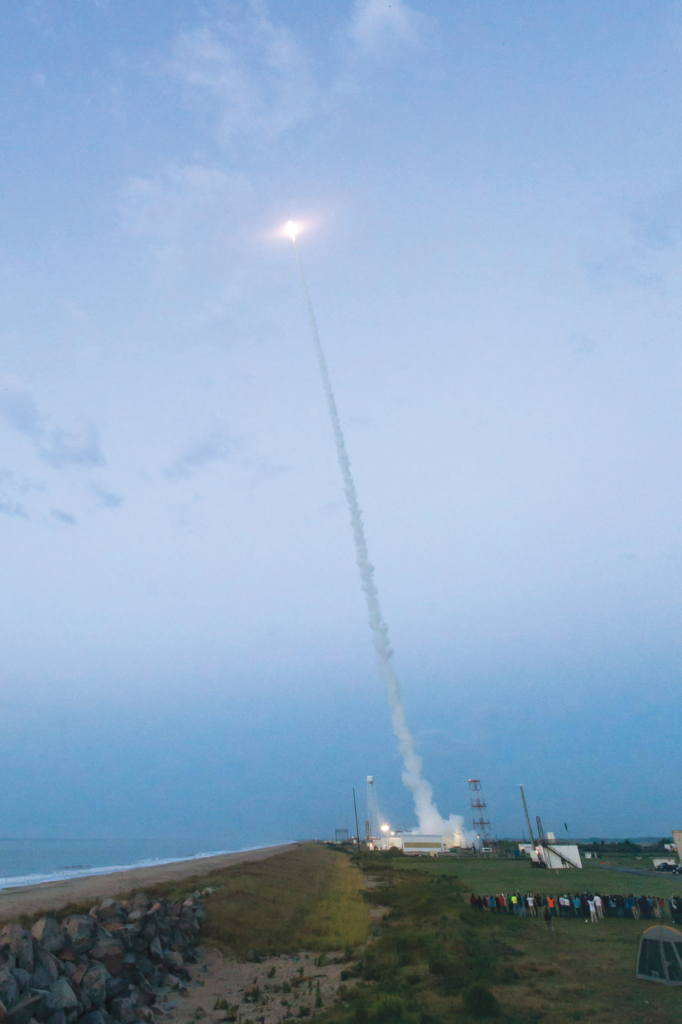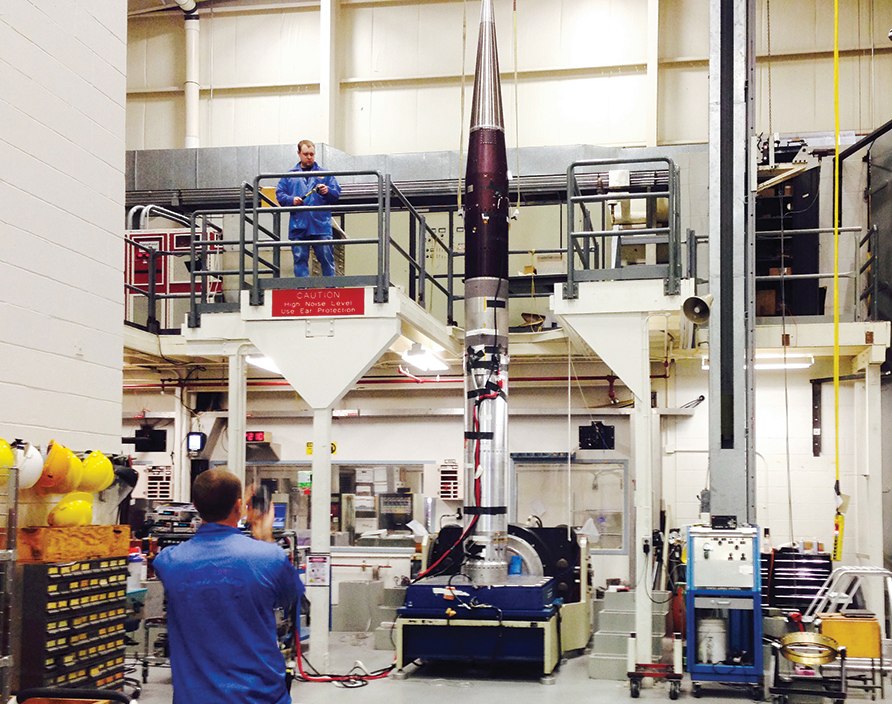Last August, a rocket carrying a payload designed and built by students from Honolulu Community College, Kapio‘lani Community College, Kaua‘i Community College and Windward Community College was successfully launched from NASA’s Wallops Flight Facility in Virginia into suborbital flight. The UH Community College team was the only community college whose payload was selected for this launch.
The multi-campus collaboration known as Project Imua (Hawaiian for “to move forward”) involved a joint faculty-student enterprise for designing, fabricating and testing payloads. Each Project Imua campus brought its unique expertise and skills to the table. Kaua‘i CC was responsible for designing and building the payload’s instrumentation. In close collaboration, Honolulu CC designed the payload’s electronic circuitry for power and telemetry, while Kapi‘olani CC designed the associated print circuit board. Windward CC was tasked with integrating all the components together and performing static tests on the payload. Both Windward CC and Kaua‘i CC designed and constructed the payload’s mechanical housing.
The scientific instrument that formed the main component of Project Imua’s payload was a UV spectrometer that analyzed the intensity of the sun’s ultraviolet radiation and its effects on the Earth’s upper atmosphere and climate.
Project Imua is funded by a two-year $500,000 grant awarded under the NASA Space Grant Competitive Opportunity for Partnerships with Community Colleges and Technical Schools. Project Imua is supported by UH Mānoa, the main Hawai‘i Space Grant Consortium campus, which provides technical assistance through Hawai‘i Space Flight Laboratory’s resources and personnel.
During Imua’s two-year period, about 100 scholarships will be awarded to students at the four UH Community College campuses. These students will be provided training and hands-on experience in the design, construction and test phases involved in fabricating small payloads. Students also participate in periodic tele-conferences with the RockSat-X coordinators. These review sessions simulate that same procedures required by NASA con-tractors involved in space flight, thus providing students a unique experience with aerospace engineering protocols.
A second launch is scheduled for August 2016.


